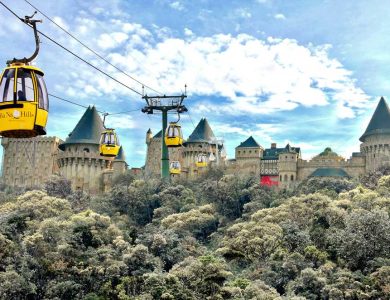When planning an international trip, one of the most crucial documents you need to secure is a tourist visa. To obtain a tourist visa, applicants are often required to submit a Statement of Purpose (SOP). This SOP for tourist visa plays a pivotal role in the approval of your application. In this comprehensive guide, we will discuss the importance of an SOP for tourist visa, what it entails, and how to create a compelling SOP that can significantly increase your chances of getting your tourist visa approved. Whether you’re applying for a tourist visa for Canada or any other country, the principles discussed here will help you navigate the process effectively.
Why is an SOP for Tourist Visa Important?
An SOP for tourist visa is a critical part of your visa application. It serves as a formal introduction to your intentions, purpose, and plans for your visit to a foreign country.
Demonstrates Genuine Intent
An SOP helps immigration authorities understand your genuine intent behind the visit. It should make it clear that you’re visiting for tourism and not for any other reasons like work, study, or settling permanently.
Highlights Your Ties to Your Home Country
An effective SOP emphasizes your strong ties to your home country, such as family, employment, property, or any other significant commitments. This reassures authorities that you intend to return home after your trip.
Provides a Clear Itinerary
Your SOP should include a detailed itinerary of your travel plans, including places you plan to visit, accommodation details, and any activities you want to engage in during your trip.
Improves Your Credibility
A well-structured SOP makes you appear more credible and trustworthy. It demonstrates your understanding of the visa requirements and your commitment to following them.
Components of an Effective SOP for Tourist Visa
Now that we understand the importance of an SOP for tourist visa, let’s dive into its essential components. Crafting a successful SOP involves careful planning and thoughtful writing. Here are the key elements your SOP should include:
Introduction
Start your SOP with a formal introduction. Mention your full name, passport number, and the purpose of the document – in this case, applying for a tourist visa. You can also include a brief statement about your enthusiasm for visiting the destination country.
Personal Information
Provide a brief overview of your personal details, including your age, marital status, and any dependent family members. This section establishes your identity.
Purpose of the Visit: Clearly state the purpose of your visit, which, in this case, is tourism. Explain why you have chosen the destination and what interests you about it.
Detailed Itinerary
Provide a well-structured itinerary of your trip. Include the places you plan to visit, the duration of your stay, and the dates of your arrival and departure.
Financial Support
Clearly outline your financial capability to support your trip. This includes your sources of income, savings, and how you intend to cover your travel expenses.
Ties to Your Home Country
Emphasize your strong ties to your home country, which are crucial in establishing your intent to return after the trip. This can include your employment, property, family, or any other commitments.
Previous Travel Experience
If applicable, mention your previous travel experiences, especially to countries with similar visa requirements. This can strengthen your application by showcasing your compliance with previous visa regulations.
Compliance with Visa Regulations
Explicitly state your understanding of the destination country’s visa regulations and your commitment to abiding by them.
Conclusion
Conclude your SOP with a positive and optimistic note, expressing your hope that your application is favorably considered.
SOP for Tourist Visa Canada
If you are specifically looking for an SOP for a tourist visa to Canada, it’s essential to tailor your statement to meet Canada’s specific requirements. Canada is known for its stringent visa regulations, so here are some additional tips for creating an SOP for a tourist visa to Canada:
- Explain Your Choice of Canada: Clarify why you’ve chosen Canada as your tourist destination. Mention Canada’s attractions, cultural diversity, or any personal connections, if applicable.
- Discuss Your Travel Plans: In your itinerary, include details about the Canadian cities and provinces you plan to visit. Canada is a vast country, so specifying your destinations can help the visa officer understand your plans.
- Demonstrate Strong Ties to Your Home Country: Emphasize your strong connections to your home country, such as employment, family, or property. Canadian authorities are particularly concerned about visitors overstaying their visas, so make your intent to return home clear.
- Financial Support: Canada has high standards for financial sufficiency. Ensure your financial documentation is comprehensive and demonstrates your ability to cover all expenses during your stay.
- Travel History: If you’ve visited Canada or other countries with strict visa requirements before, briefly mention these experiences and your compliance with visa regulations.
SOP for Visitor Visa
While the terms “tourist visa” and “visitor visa” are often used interchangeably, it’s important to understand that some countries may have specific visitor visa categories. If you are applying for a visitor visa, you can follow the same structure mentioned above, with slight modifications to address the sop for visitor visa category. Ensure that you clarify the purpose of your visit and maintain transparency in your intentions.
SOP for Specific Visa Categories
Depending on the country and your specific travel plans, you may need to tailor your SOP to suit different visa categories. Here are some common visa categories and how to adapt your SOP for each:
- Tourist Visa: As previously discussed, an SOP for a tourist visa should focus on your travel plans, interests in the destination country, financial capability, and ties to your home country. It’s essential to show that your visit is solely for tourism.
- Business Visa: For a business visa, highlight your business purpose, such as meetings, conferences, or negotiations. Emphasize your professional background, the significance of the trip for your business or career, and your intention to return after conducting your business activities.
- Student Visa: If you’re applying for a student visa, your SOP should outline your academic goals, the specific course or program you plan to enroll in, and your long-term educational and career objectives. It’s crucial to convey your commitment to adhering to the visa regulations, such as studying full-time and returning after your studies.
- Family or Dependent Visa: When applying for a family or dependent visa, explain your relationship with the primary visa holder, the reasons for your visit, and your intent to stay with your family member for the authorized period. Show your financial ability to support yourself during your stay.
Tips for a Strong SOP
In addition to the fundamental components of an SOP, here are some additional tips to ensure your SOP stands out and presents a compelling case:
- Be Clear and Concise: Keep your SOP concise and to the point. Avoid unnecessary details and lengthy explanations.
- Use Formal Language: Your SOP should maintain a formal and professional tone throughout. Avoid informal language.
- Customize for Each Country: If you’re applying for visas to multiple countries, tailor your SOP for each destination. Highlight the specific attractions and reasons for visiting that country.
- Proofread and Edit: Ensure your SOP is free of grammatical and spelling errors. It should be well-structured and easy to read.
- Avoid Plagiarism: Do not copy SOPs from the internet or other sources. Authorities are skilled at identifying plagiarized content, which can lead to a rejection of your application.
- Attach Supporting Documents: Include relevant documents, such as your bank statements, proof of employment, and any other evidence that supports the information in your SOP.
- Follow Visa Guidelines: Familiarize yourself with the visa guidelines and requirements of the destination country. Your SOP should align with these guidelines.
- Seek Professional Help: If you are unsure about the content or need guidance, consider seeking help from visa consultants or professionals who specialize in visa application assistance.
Conclusion
In conclusion, writing a well-crafted SOP for a tourist visa or any other visa category is essential to ensure a successful application. Your SOP should be a reflection of your genuine intent and a clear outline of your plans and ties to your home country. By following the guidelines provided in this article and customizing your SOP according to your specific visa category, you’ll significantly increase your chances of obtaining the visa you desire. Remember, each country may have unique requirements, so always refer to the specific guidelines of the destination country to ensure a successful application.




